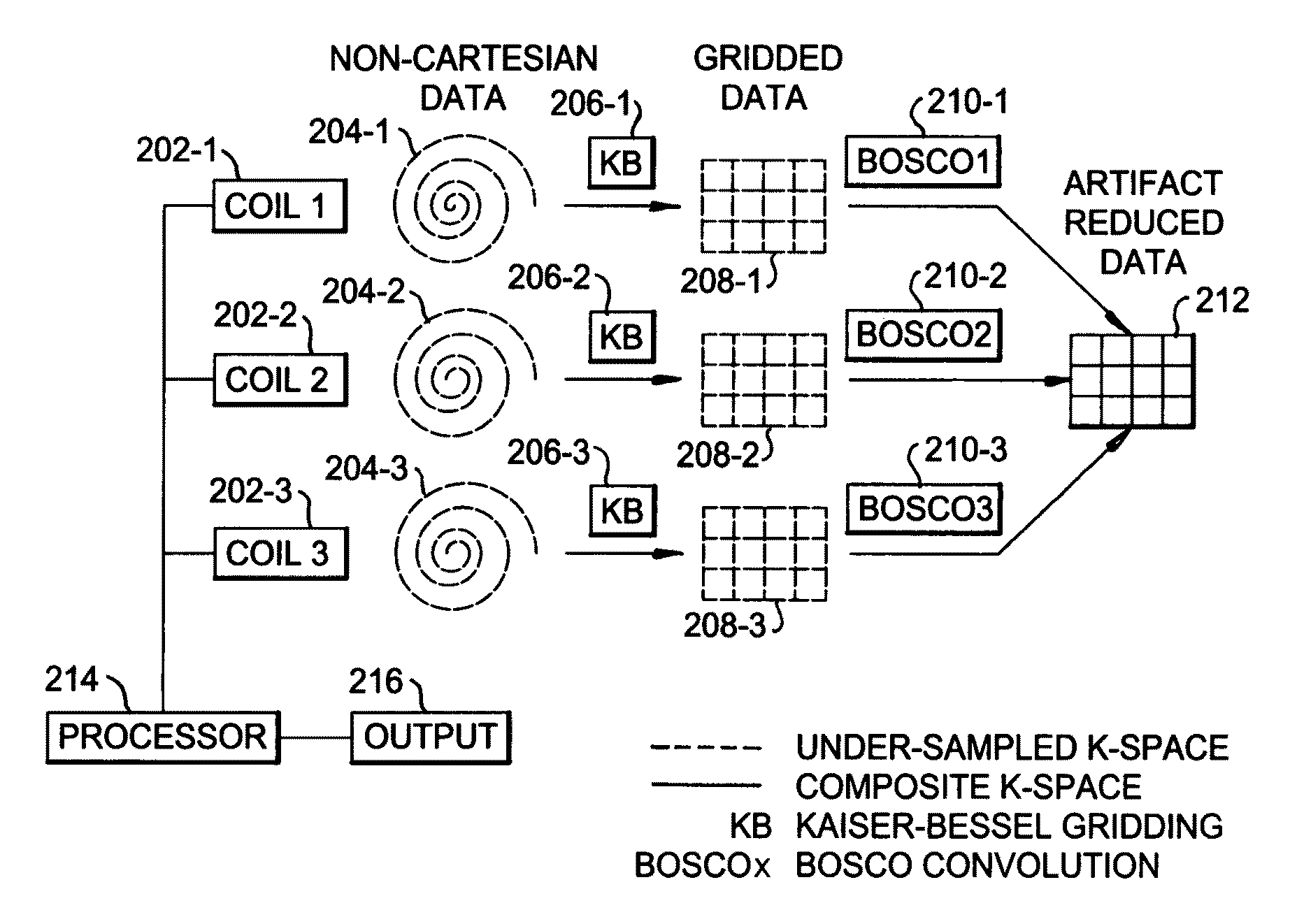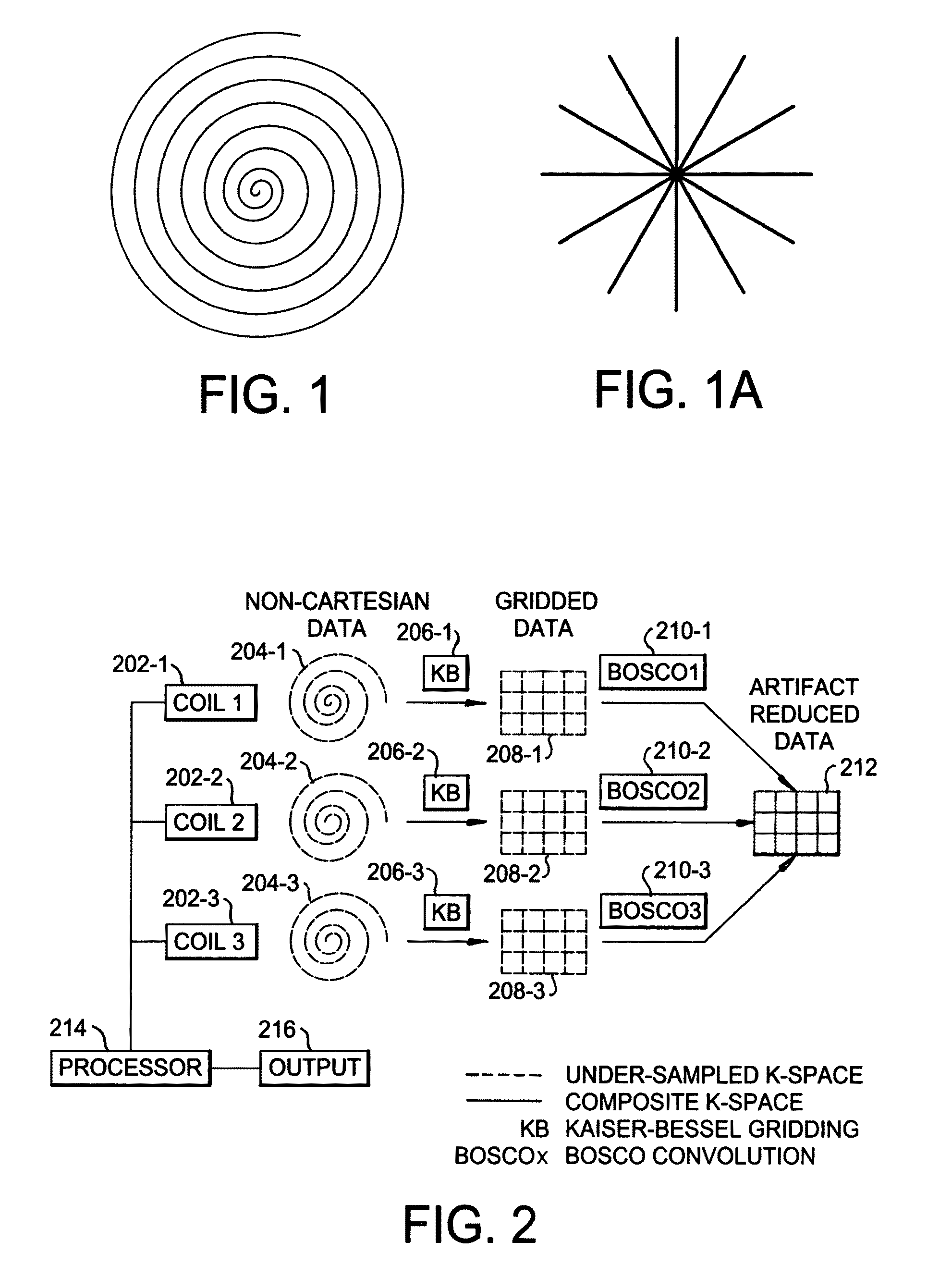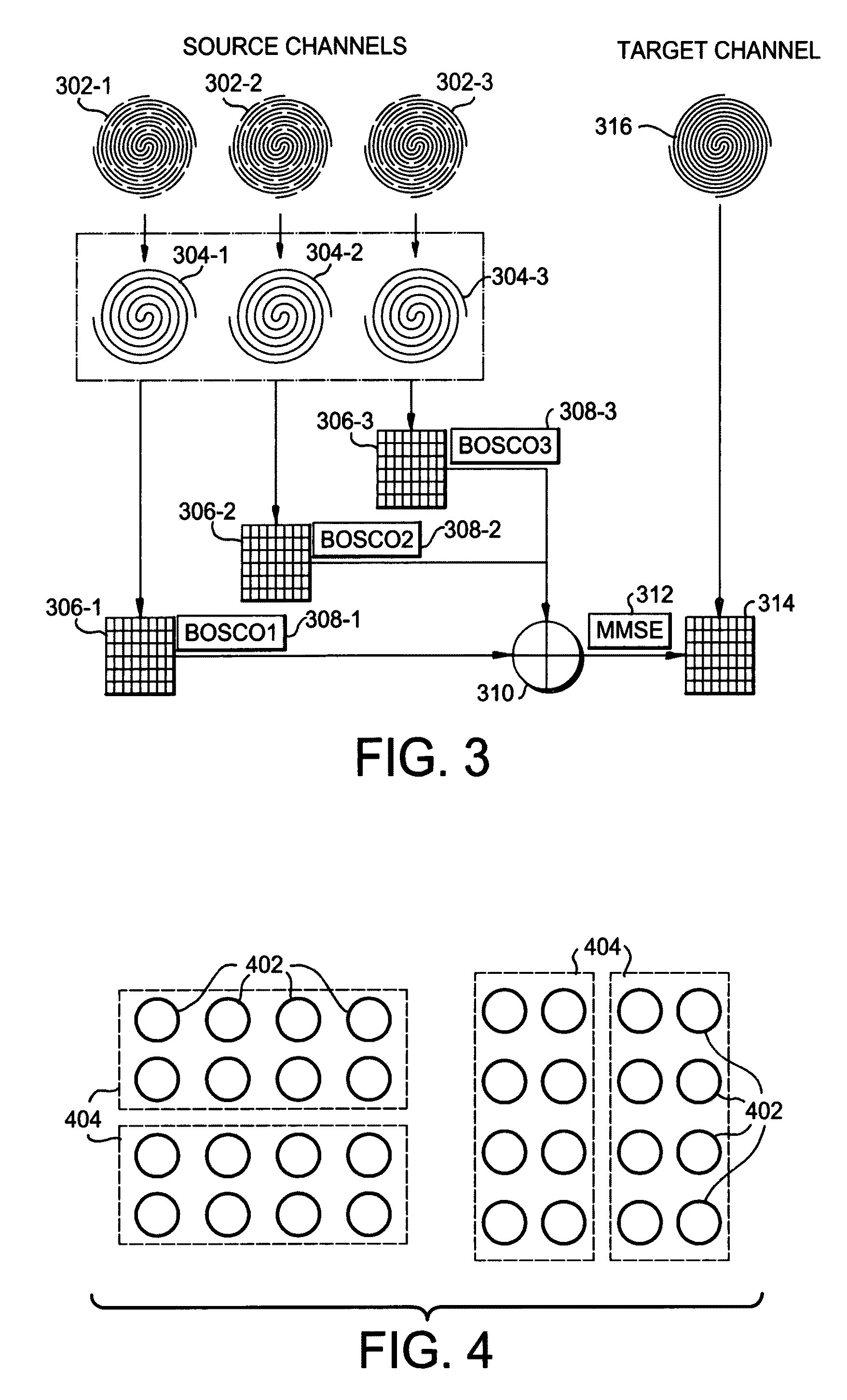Partially parallel magnetic resonance imaging using arbitrary k-space trajectories with image reconstruction based on successive convolution operations
a magnetic resonance imaging and image reconstruction technology, applied in the field of imaging, can solve the problems of inaccurate coil sensitivity profiles, short image acquisition time, and inability to meet the needs of some applications such as real-time imaging, and achieve the effect of uniform sensitivity profiles
- Summary
- Abstract
- Description
- Claims
- Application Information
AI Technical Summary
Benefits of technology
Problems solved by technology
Method used
Image
Examples
Embodiment Construction
[0021]A preferred embodiment of the invention will be set forth in detail with reference to the drawings, in which like reference numerals refer to like elements or method steps throughout.
[0022]In parallel imaging, MR signals are received simultaneously from multiple RF channels, each corresponding to a separate coil with a specific spatial sensitivity profile. We use variable-density and constant-density spiral k-space trajectories as two examples of common non-Cartesian trajectory, although others could also be used. As shown in FIG. 1, the variable-density spirals have two sampling densities, with the inner k-space being fully sampled to support the full FOV and the outer k-space being 2×-8× under-sampled to accelerate the imaging speed. Constant-density spirals have the same sampling density throughout k-space.
[0023]FIG. 2 shows details of how the data from multiple coils are combined in this invention. MR coils (specifically COIL 1202-1, COIL 2202-2 and COIL 3202-3) are used t...
PUM
 Login to View More
Login to View More Abstract
Description
Claims
Application Information
 Login to View More
Login to View More - R&D
- Intellectual Property
- Life Sciences
- Materials
- Tech Scout
- Unparalleled Data Quality
- Higher Quality Content
- 60% Fewer Hallucinations
Browse by: Latest US Patents, China's latest patents, Technical Efficacy Thesaurus, Application Domain, Technology Topic, Popular Technical Reports.
© 2025 PatSnap. All rights reserved.Legal|Privacy policy|Modern Slavery Act Transparency Statement|Sitemap|About US| Contact US: help@patsnap.com



